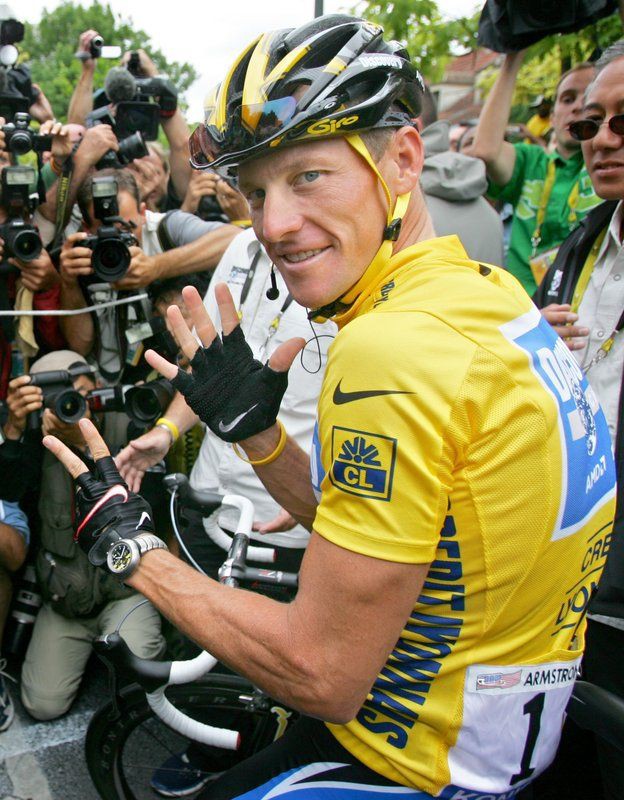Lance Armstrong, the famed American cyclist who made history with his record-breaking seven consecutive victories at the Tour de France, is set to undergo surgery due to a recent health setback. The cyclist, who has previously battled cancer and faced various controversies, is once again facing a personal challenge. In this article, we will explore the events leading up to Armstrong’s decision to go under the knife, the implications of the surgery, and how this may affect his life moving forward.
The Health Crisis: A Fractured Collarbone
The incident that led to Armstrong’s decision to undergo surgery took place during a recent competitive race. Armstrong was participating in the Vuelta a Castilla y León, a well-known stage race in Spain, when the unthinkable happened. During the final stages of the race, Armstrong was involved in a multi-rider crash, resulting in a severe injury to his right collarbone. The crash occurred close to the finish line, and despite his best efforts to stay in the race, Armstrong was forced to withdraw from the event after being unable to continue.
Initial reports indicated that Armstrong had suffered a fractured collarbone, which is a common injury in professional cycling. However, after further medical evaluations, it was revealed that the fracture was more complicated than originally anticipated. Armstrong’s right collarbone had been broken into several pieces, complicating the healing process. This level of injury requires surgical intervention to ensure proper healing, and it was this medical need that led Armstrong to make the decision to undergo surgery.
The Decision to Have Surgery
While fractures to the collarbone are not uncommon in cycling, Armstrong’s decision to undergo surgery was based on the severity of the break and the necessity of a quick recovery. According to orthopedic specialists, fractures involving multiple pieces of bone are best treated surgically to restore the structural integrity of the bone and reduce the risk of complications such as non-union or malalignment.
Armstrong, who has always been known for his tenacity and determination, was quick to make the decision to have surgery. After consulting with several medical professionals, including some of the top orthopedic surgeons in the country, Armstrong opted for surgery to expedite his recovery and avoid any long-term issues. The surgery was scheduled to take place in the United States, where Armstrong has received care from some of the best specialists throughout his career.
Dr. Frank Cordasco, an orthopedic surgeon at the Hospital for Special Surgery in New York, has stated that surgical treatment for fractures like Armstrong’s is increasingly common among athletes. Dr. Cordasco pointed out that many athletes prefer surgery for quicker recovery, which allows them to return to training and competition faster. This is especially important for professional athletes like Armstrong, whose livelihood depends on their physical condition.
Armstrong’s Recovery Process
Following the surgery, Armstrong will begin his recovery process, which will include both physical rehabilitation and a period of rest. The exact timeline for his recovery remains uncertain, but medical professionals predict that it could take anywhere from six to eight weeks before he can begin light training. Full recovery from a collarbone fracture generally takes around three months, but this can vary depending on the severity of the injury and the individual’s healing rate.
Throughout his career, Armstrong has demonstrated a remarkable ability to recover from injuries. His battle with cancer in the late 1990s was a testament to his strength, as he overcame advanced testicular cancer that had metastasized to his lungs and brain. Armstrong’s return to the professional cycling scene after his recovery from cancer remains one of the most inspiring comebacks in sports history. Given his history of resilience and strong work ethic, Armstrong’s doctors are optimistic that he will make a full recovery and return to the sport he loves.
However, the recovery process will likely be more complicated due to Armstrong’s age. At 43 years old, Armstrong is no longer in the prime of his career, and the challenges of recovery from an injury at this stage of his life are greater than they were during his younger years. Nevertheless, Armstrong is known for his discipline and focus, which will play a significant role in his rehabilitation efforts.
Armstrong’s Legacy and Challenges Ahead
Lance Armstrong’s career has been one of both triumph and controversy. On one hand, he is regarded as one of the greatest cyclists of all time, having won seven consecutive Tour de France titles between 1999 and 2005.

